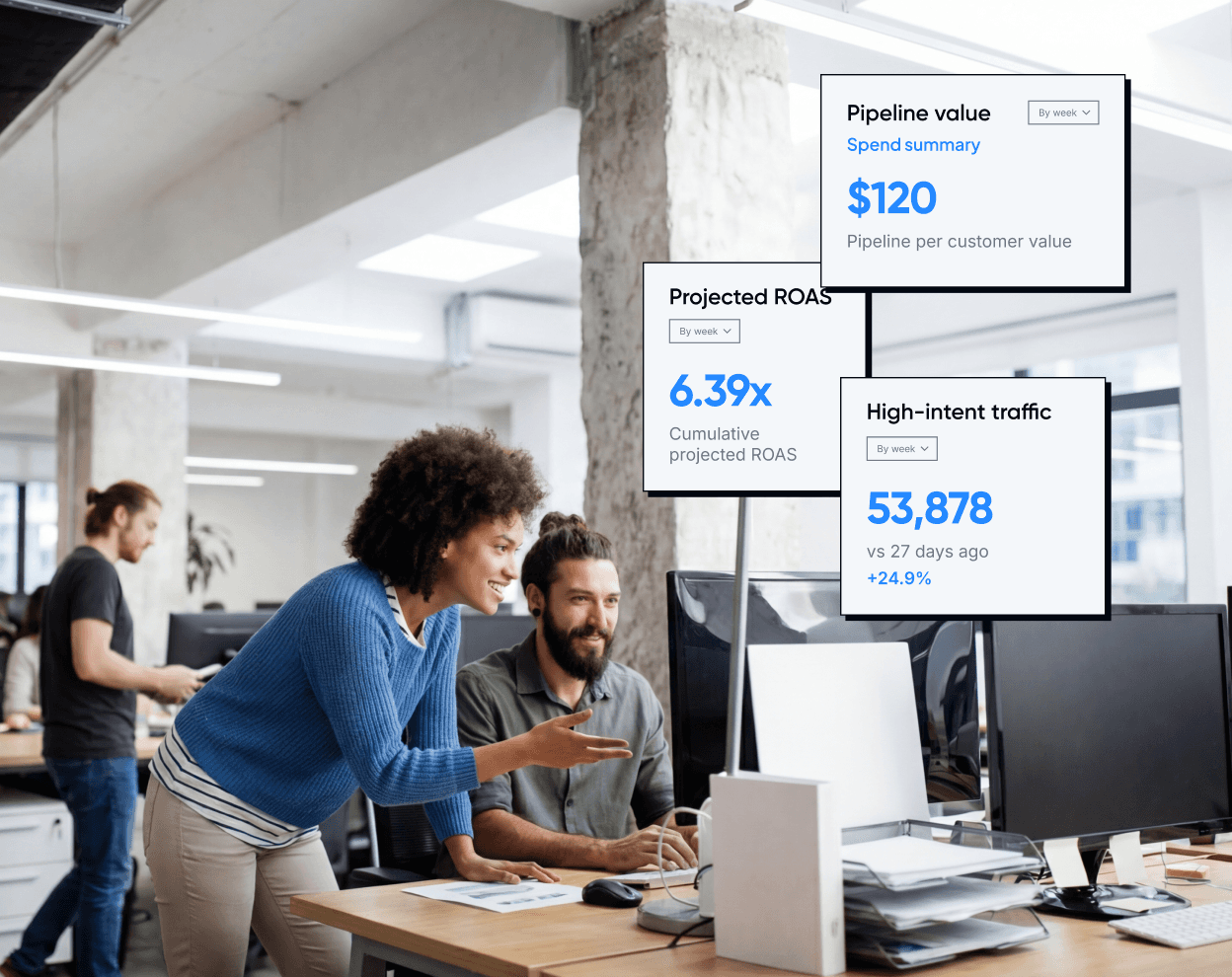Programmatic advertising started simply, with the first banner ad, but that humble beginning launched a revolution in digital advertising. What seemed like a one-off display ad in 1994 opened up an entire ecosystem of ad exchanges, real-time bidding (RTB), algorithms, and automation that now powers how brands reach their target audience, manage ad spend, and optimize ad campaigns across channels.
What Is Programmatic Advertising?
Programmatic advertising is the automated process of buying and selling online advertising space. Instead of manually arranging fixed display ads like traditional media buying, programmatic ads use DSPs (Demand-Side Platforms), SSPs (Supply-Side Platforms), algorithms, and data (including first-party data and demographics) to streamline the ad buying process. Display ads, banner ads, social media, and video – all of it can be tailored so that the right digital ad appears to the right user at the right time.
Why Programmatic Advertising Matters
Automating the ad buying process saves time and reduces inefficiency. With programmatic advertising, brands gain transparency into where their ad impressions occur, who’s seeing the ads, what metrics are being tracked, and how to optimize in real-time. Using real-time bidding (RTB), contextual advertising, and data-driven decision-making, marketers can ensure that their ad spend is utilized effectively, reaching the right audience and driving brand growth.
A Brief History of Programmatic Advertising
The story begins in 1994, when the first banner ad appeared online on HotWired, yielding astonishing click‐through rates compared to what digital advertising sees today. In 1996, DoubleClick introduced the first major ad server, helping advertisers deliver and measure ads at scale. By 2000, Google entered with AdWords (now Google Ads), introduced CPC (Cost Per Click) pricing, and then launched the Google Display Network to allow ad placements based on audience segments. Self-serve ad tools like AdSense followed, democratizing access but also creating content quality challenges. Around 2007, ad exchanges with real-time bidding capabilities solidified what we think of today as programmatic advertising. Over time, features like programmatic direct and private marketplaces emerged, offering more refined control over where ads run and to whom.
Real-World Examples of Programmatic Advertising Success
To illustrate how powerful programmatic advertising can be when done well, here are some concrete case studies:
The Economist’s “Raising Eyebrows and Subscriptions”
The Economist collaborated with agencies Proximity London and UM to deploy a campaign utilizing programmatic platforms, targeting more than five million previously unseen, retargetable users through the production of topical, provocative content within dynamic newsrooms. That campaign resulted in 64,000 paid subscriptions, with an estimated payback of £25 of revenue for every £1 invested.
In another phase, with Matterkind via the Taboola DSP, The Economist reduced its subscription CPA by 55% and increased viewable CTR (vCTR) by 28%.
SuperDraft’s Programmatic DOOH Campaign for the Super Bowl
SuperDraft launched a national programmatic digital out-of-home (DOOH) + mobile campaign in a short time frame to promote a fantasy sports contest in the lead-up to the Super Bowl. Ads were served across thousands of digital billboards and screens in NFL markets, generating incremental revenue quickly with high agility and ad impressions achieved within hours.
The Future of Programmatic Advertising
The future will continue to lean even more heavily into automation, AI, and data privacy. As third-party cookies fade, first-party data and contextual signals will become more critical. Private marketplaces will grow, giving brands exclusive inventory and tighter control over ad placements. Experimentation with creative, channel mix (including digital audio and connected TV), and measurement models will become standard. Brands that can streamline their digital ad operations, optimize continuously, and deploy dynamic creatives will emerge as winners.
Stop navigating the programmatic ecosystem alone
The future of digital advertising is complex, but your strategy doesn’t have to be. Get a competitive edge with Agility’s precision brand advertising. Programmatic channels are only one piece of the precision brand advertising puzzle.
Agility’s brand advertising platform unifies programmatic channels, constant creative validation, persona creation, and incrementality measurement in one place. The result is brand advertising that creates new buyers and helps you grow your business with certainty. Get started with precision brand advertising today.
FAQs
What’s the difference between programmatic advertising and traditional media buying?
Traditional media buying involves manual negotiations for fixed ad space and static placements. Programmatic advertising automates that process, leveraging DSPs, SSPs, and real-time bidding so that ad space is bought dynamically based on audience data.
What is real-time bidding (RTB)?
RTB is the mechanism by which ad impressions are auctioned in real time. Advertisers bid for each impression via ad exchanges. This ensures ads are served only when conditions (such as user demographics or context) are right, helping optimize ad spend.
How do DSPs and SSPs function?
DSPs are platforms advertisers use to buy ad inventory programmatically, often across many channels and contexts. SSPs are what publishers and websites use to offer their inventory. The interplay between DSPs, SSPs, and ad exchanges forms the backbone of programmatic ad buying.
How do brands measure success in programmatic campaigns?
Success is measured with metrics such as impressions, click‐through rates, viewable CTR, conversions, cost per acquisition (CPA), return on ad spend (ROAS), and audience reach. Brands also look at metrics around engagement, retention, and downstream impact, like subscription rates or product purchases.
How will privacy changes affect programmatic advertising?
With the phase-out of many third-party cookies, programmatic advertisers are shifting toward first-party data, contextual targeting, and privacy-compliant identifiers. This means improving data collection practices, investing in user consent, and being more transparent about how user data is used.
Share in...





